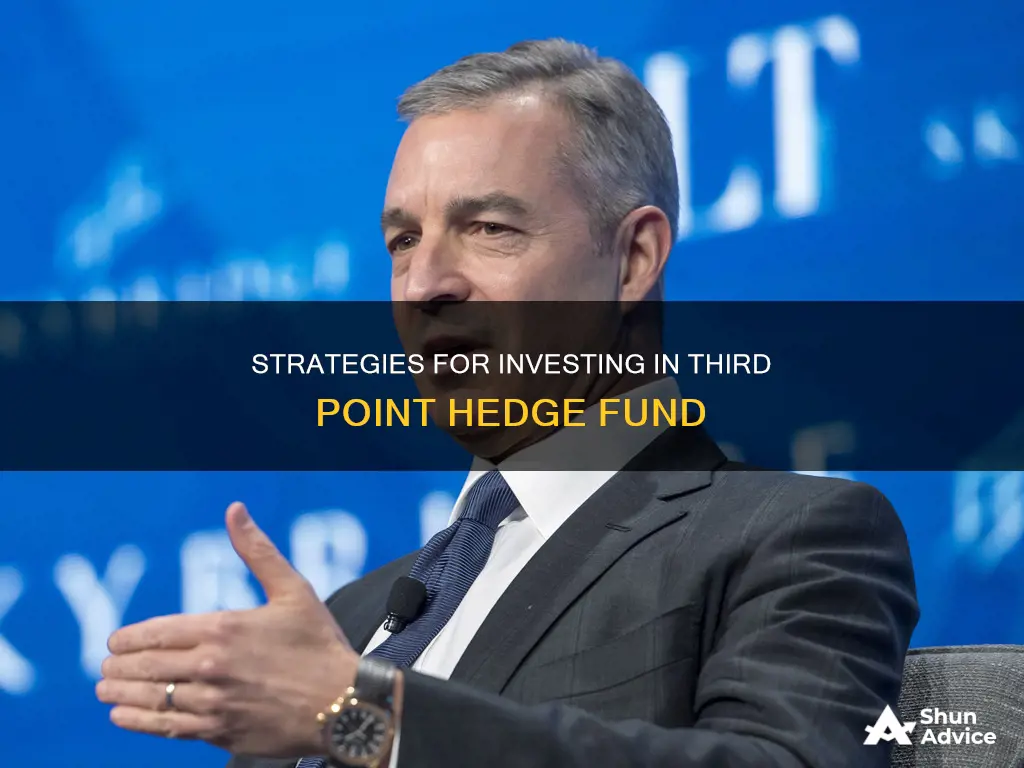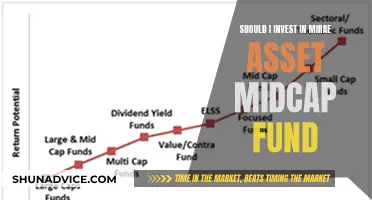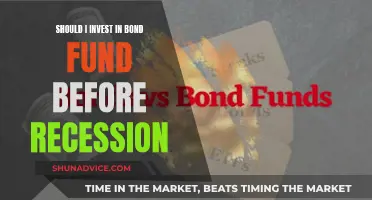
Third Point is a New York-based hedge fund founded by Daniel S. Loeb in 1995. The firm operates as an employee-owned and SEC-registered investment advisor. Third Point primarily invests in public equity, fixed income, and ADR markets globally and deploys an investment strategy that capitalizes on companies undergoing events such as spinoffs or bankruptcies and pushes for corporate change. The fund has a multi-decade track record of advocating for operational or portfolio changes to drive long-term shareholder value through engagement with mature, publicly listed companies. Third Point's largest holding is Amazon.com Inc. with 5,100,000 shares held. The fund is led by its founder and CEO, Daniel Loeb, who has been at the front lines of investing in equities, credit, and venture capital for his entire career.
| Characteristics | Values |
|---|---|
| Type | Hedge fund |
| Location | New York |
| Founder and CEO | Daniel S. Loeb |
| Year founded | 1995 |
| Investment strategy | Opportunistic investing in equities, corporate and structured credit, and venture capital strategies |
| Investment focus | Public equity, fixed income, and ADR markets globally |
| Notable investments | Massey Energy, Acorda Therapeutics, Yahoo, Sotheby's, Sony, Fanuc, Ligand Pharmaceuticals, Baxter International, Nestlé, Netflix, MGM, Amazon, Taiwan Semiconductor Manufacturing Corp., Vistra Corp., Meta Systems, Microsoft, Radiate Holdings |
| Notable clients | Endowments, sovereign wealth funds, corporate and public pensions, funds of funds, a reinsurance affiliate, high-net-worth individuals, and employees |

Investment strategy
Third Point is a New York-based hedge fund founded by Daniel S. Loeb in 1995. The firm operates as an employee-owned and SEC-registered investment advisor.
Third Point primarily invests in public equity, fixed income, and ADR markets globally and deploys an investment strategy that capitalizes on companies “undergoing events such as spinoffs or bankruptcies and pushes for corporate change".
Third Point's investment strategy can be summarised as follows:
- Opportunistic investing: Third Point takes an opportunistic approach to investing, focusing on equities, corporate and structured credit, and venture capital strategies. They aim to identify companies early in their lifecycle, where they can take a board seat and advise on go-to-market strategies.
- Event-driven approach: The firm looks for investments in select strategies while managing individual security and market risks. They focus on companies undergoing events such as mergers and acquisitions, restructurings, and other special situations that can unlock value.
- Risk management: Third Point actively manages exposures based on an assessment of risk-reward in varied market conditions. They employ multiple forms of engagement to create catalysts and drive outcomes.
- Global presence: With offices in the US, India, Hong Kong, and London, Third Point is able to invest in public and private markets globally across the capital structure.
- Long-term value creation: Third Point has a track record of advocating for operational or portfolio changes to drive long-term shareholder value. They aim to identify and invest in companies with high growth potential and work closely with them to navigate capital markets and achieve success.
- Focus on credit and equity: Third Point has a history of investing in structured credit, including RMBS/CMBS and various forms of loan securitizations. They also have expertise in short-selling individual securities and managing long and short equity positions.
- Flexibility: The firm is known for its ability to swiftly deploy capital during market dislocations and take advantage of investment opportunities in all types of credit securities, including government bonds, distressed and performing credits, and post-reorganization equities.
Target Date Funds: Charles Schwab Investment Strategies
You may want to see also

Leadership
Third Point is a New York-based hedge fund founded by Daniel S. Loeb in 1995. Loeb is the current CEO and Chief Investment Officer of Third Point and has had extensive experience in investing in equities, credit, and venture capital throughout his career. He has also served on numerous public company boards and driven substantial value for shareholders.
Loeb's leadership style can be described as activist and engaged. He actively engages with the companies Third Point invests in to optimize long-term value. Loeb has a track record of advocating for operational or portfolio changes to drive long-term shareholder value and has been successful in influencing company decisions and leadership.
A notable example of Loeb's leadership style is his involvement with Yahoo. After Third Point disclosed its stake in Yahoo, Loeb requested four seats on the firm's board. While Yahoo initially refused, Loeb persisted and eventually gained three seats for himself and two other Third Point candidates. Loeb's efforts ultimately led to a transformation of Yahoo, with Marissa Mayer's appointment as CEO being seen as the culmination of his activism.
Loeb has also been successful in influencing other companies, such as Massey Energy, Acorda Therapeutics, and Sotheby's. He has pushed for corporate change and held leadership accountable, resulting in positive outcomes for Third Point's investments.
In addition to Loeb, Third Point has a team of experienced professionals who contribute to its success. Josh Targoff, the Chief Operating Officer & Chief Legal Officer, has a background in mergers and acquisitions and investment banking. Ian Wallace, the Head of Credit, has experience in high yield and distressed investments. Shalini Sriram, the Head of Structured Credit, oversees a range of investments and collaborates closely with the credit, venture capital, and equities teams.
Overall, Third Point's leadership is characterized by its activist and engaged approach, with Loeb at the helm, driving the company's investment strategy and advocating for changes to maximize long-term value.
HOA Fund Investment Strategies: A Guide to Smart Investing
You may want to see also

Performance
Third Point has ranked among the industry's best performers, returning an average of 19% per year since its launch in 1995. The hedge fund firm headed by Dan Loeb gained 0.9% in June, while the S&P 500 climbed 3.6% in the same period. The multistrategy fund is now up 11.6% for the first half of the year, compared to 15.3% for the benchmark.
The biggest winner for the first half of the year was energy company Vistra Corp., which surged about 125%. Three of the four other top winners were Amazon, Facebook parent Meta Systems, and Microsoft.
Third Point's equity strategy, all on the long side, drove the increases for the first six months, with long positions contributing 12.2 percentage points to gross gains. However, losses from the short book reduced the total from equities to 10.1%.
The firm's sizable credit book played a minor role in the first half, contributing just 1.4% to gross gains. The corporate and sovereign strategy made its money on the long side, with all of its gains from structured credit coming from short hedges.
Third Point's flagship fund, listed on the LSE in 2007, offers shareholders direct exposure to its strategy, which invests globally across the capital structure and in diversified asset classes to optimise risk-reward throughout a market cycle.
Bloomberg's Best Investment Fund Options: Where to Start?
You may want to see also

Risk management
- Investment Strategy: Third Point employs an opportunistic, event-driven investment strategy. This approach involves investing in companies undergoing events such as spinoffs or bankruptcies and advocating for operational or portfolio changes to drive long-term shareholder value. While this strategy offers potential for significant gains, it also carries the risk of underperformance if the targeted companies do not meet expectations or if the market conditions change unexpectedly.
- Market and Security Risks: Third Point actively manages exposures based on an assessment of risk-reward in varied market conditions. They invest across different sectors and asset classes, including public equity, fixed income, and ADR markets. By diversifying their investments, they aim to mitigate the risk of concentrating their portfolio in specific sectors or assets.
- Short-Selling and Leverage: Third Point has a history of short-selling individual securities, which can be a profitable strategy in certain market conditions. However, short-selling also carries the risk of unlimited losses if the security price increases. Additionally, the use of leverage, or borrowing money to invest, can amplify both gains and losses, increasing the overall risk exposure of the fund.
- Macro and Global Factors: As a macro investor, Third Point focuses on global imbalances in fixed income, currency, commodities, and equity markets. This strategy relies on the fund's ability to identify and exploit economic, financial, and political imbalances. However, these macro factors introduce additional risks, as they are subject to sudden changes and unpredictable events that can impact the fund's performance.
- Due Diligence and Research: Third Point conducts extensive research and due diligence before making investment decisions. They employ strategic advisors, consultants, and industry experts to gain insights and feedback on investment themes and specific companies. This thorough approach helps mitigate the risk of making ill-informed investment decisions.
- Risk Committee and Governance: Third Point has a dedicated risk committee that oversees a range of investments. The fund also emphasizes the importance of continual self and organizational improvement. This commitment to risk management at the governance level demonstrates their focus on identifying and managing risks effectively.
In summary, investing in Third Point hedge fund involves navigating various risks inherent in their investment strategies and global focus. Effective risk management requires active exposure management, diversification, and robust research. Investors should carefully consider these risk management practices and conduct their due diligence before investing in Third Point or any other hedge fund.
G Fund: A Safe and Secure Investment Option
You may want to see also

Investment opportunities
Third Point is a New York-based hedge fund founded by Daniel S. Loeb in 1995. The fund primarily invests in public equity, fixed income, and ADR markets globally, with a focus on companies undergoing significant events or changes.
Third Point offers a range of investment opportunities through its various funds and investment strategies. Here are some key areas to consider:
- Equities: Third Point invests in equities across various sectors, including technology, healthcare, and energy. They employ an event-driven approach, seeking to identify companies early in their lifecycle where they can actively engage and drive long-term shareholder value. This includes taking board seats and advising on go-to-market strategies.
- Structured Credit: Third Point has a history of investing in structured credit, including RMBS/CMBS and various forms of loan securitizations. Their structured credit team collaborates closely with the credit, venture capital, and equities teams to identify opportunities.
- Venture Capital: Third Point Ventures, the venture capital arm of Third Point, invests in startup technology, alternative energy, and clean technology companies. They seek to identify high-growth potential companies and provide guidance as they navigate capital markets.
- Macro Investing: The fund also focuses on macro investing, including global fixed income, currency, commodities, and equity markets, as well as their related derivatives. They aim to capitalize on imbalances within and across global markets.
- Reinsurance: Third Point Reinsurance is a specialty property and casualty reinsurer. It offers investment opportunities in the reinsurance industry, generating long-term investment returns.
- Closed-End Investment Companies: Third Point Offshore Investors is a UK-based closed-end investment company. It provides a unique opportunity for investors to gain exposure to Third Point's flagship strategy, investing globally across diversified asset classes.
- Specific Companies: Third Point has a history of investing in specific companies and advocating for operational or portfolio changes. Notable examples include Massey Energy, Acorda Therapeutics, Yahoo, Sotheby's, Sony, and Ligand Pharmaceuticals.
- Sector-Focused Strategies: Third Point employs sector-focused strategies, particularly in event and fundamental equities. They have a long history of short-selling individual securities and identifying catalysts in mergers and acquisitions, restructurings, and other special situations.
- Global Presence: With offices in major financial hubs such as New York, London, Hong Kong, and Bangalore, Third Point has a global reach. This allows them to identify investment opportunities across different markets and sectors.
- Experienced Management: Led by Daniel S. Loeb, Third Point's management team has extensive experience in investing, finance, and business operations. This expertise allows them to make informed investment decisions and optimize long-term value for investors.
Overall, Third Point offers a range of investment opportunities across different sectors and strategies. Their focus on active engagement, global presence, and experienced management provides potential for investors seeking exposure to a diverse range of investments.
Invest Smartly: Direct Mutual Funds Guide
You may want to see also
Frequently asked questions
Third Point is a New York-based hedge fund founded by Daniel S. Loeb in 1995.
Third Point primarily invests in public equity, fixed income, and ADR markets globally. It also manages Third Point Reinsurance, a property and casualty reinsurer, and Third Point Offshore Investors, a UK-based closed-end investment company.
Third Point deploys an investment strategy that capitalizes on companies “undergoing events such as spinoffs or bankruptcies and pushes for corporate change". It also employs an opportunistic, event-driven approach to finding investments and focuses on macro investing.
Third Point is managed by its founder and CEO, Daniel S. Loeb.
Third Point has ranked among the industry's best performers, returning an average of 19 percent a year since its launch. However, in June 2024, the firm posted a relatively modest gain in what was otherwise a strong stock market, causing it to underperform compared to the broader market.







